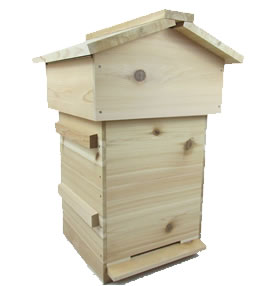Beehive Inner Cover: Understanding Its Importance and Functions in Beekeeping
A beehive inner cover is a crucial component of a beehive used in beekeeping, providing insulation, ventilation, and protection to the hive. Placed directly beneath the outer cover, the inner cover helps regulate temperature and humidity within the hive while preventing excess moisture buildup. Understanding the importance and functions of the beehive inner cover is essential for beekeepers to maintain healthy and productive bee colonies.
Importance of Beehive Inner Cover
The beehive inner cover serves several important purposes in beekeeping:
- Insulation: The inner cover provides insulation to the hive, helping to regulate temperature and protect bees from extreme heat or cold. It helps maintain a stable environment within the hive, promoting brood rearing and colony health.
- Moisture Control: By preventing excess moisture buildup, the inner cover helps prevent condensation and mold growth within the hive. Proper ventilation provided by the inner cover ensures that humidity levels remain within the optimal range for bee health.
- Ventilation: The inner cover features ventilation holes or notches that allow for air circulation within the hive. Adequate ventilation helps remove stale air, odors, and excess heat from the hive, creating a healthier environment for bees.
- Protection: The inner cover provides an additional layer of protection to the hive, shielding it from the elements, pests, and predators. It helps keep out rain, wind, and debris while providing a secure barrier against intruders.
Functions of Beehive Inner Cover
The beehive inner cover serves several important functions in beekeeping:
- Temperature Regulation: By providing insulation and ventilation, the inner cover helps regulate temperature within the hive, ensuring that bees remain comfortable and healthy throughout the year.
- Moisture Management: The inner cover helps control humidity levels within the hive, preventing excess moisture buildup that can lead to mold, mildew, or respiratory issues for bees.
- Condensation Prevention: Proper ventilation provided by the inner cover helps prevent condensation from forming within the hive, reducing the risk of moisture-related problems such as wet frames or honey spoilage.
- Space Divider: In some hive configurations, the inner cover serves as a space divider between the brood chamber and honey supers, preventing bees from building comb in unwanted areas and facilitating hive management.
Conclusion
In conclusion, the beehive inner cover is a vital component of a beehive, providing insulation, ventilation, and protection to the hive. Understanding the importance and functions of the inner cover is essential for beekeepers to maintain healthy and productive bee colonies.
Whether you're a beginner or experienced beekeeper, ensuring that your hive has a well-designed and properly installed inner cover is crucial for successful beekeeping and the well-being of your bees.



